GDPR impact on Programmatic Trading blog series: IAB Europe’s new GDPR Transparency and Consent Framework – a unique opportunity for publishers
Programmatic technology is now at the forefront of data-driven advertising, indeed, half of European display ad revenue is now traded programmatically and programmatic in Europe has reached a market value of more than €8bn according to IAB Europe’s 2016 Programmatic Market Sizing study. However, with regulatory challenges drastically questioning how the digital advertising ecosystem operates, programmatic trading needs to show that it can adapt to meet the evolving needs of the industry.
In this blog series, IAB Europe’s Programmatic Trading Committee and its members assess the impact and the opportunities of the GDPR on Programmatic Trading. In the first blog MediaMath and Sublime Skinz look at the unique opportunity that the IAB Europe Transparency & Consent Framework (the Framework) presents for the publisher community.
Lewis Rothkopf, General Manager, Media and Growth Channels, MediaMath
MediaMath believes that the GDPR embraces one of our core beliefs: that respecting consumer privacy is a necessity and an opportunity, not an option or burden. Consumers have long been telling us—through opt outs, ad blocking, and adoption of ad-free subscription services—that they are unhappy with the current state of advertising. This unhappiness stems from the perception that advertising is not balancing its capacity to provide engaging and informative content with the obligation to provide consumers with transparency about, and control over, their digital experience. For these reasons, the GDPR creates a valuable opportunity by encouraging advertisers to form more explicit relationships with consumers and provide advertising that they can feel good about, interact with in more meaningful ways, and trust.
Over the last 12 months, IAB Europe has developed a Transparency & Consent Framework (the Framework) in consultation with stakeholders across the industry which helps website operators become GDPR-ready. The Framework offers publishers new tools to provide transparency into the digital advertising ecosystem on which they rely to help monetise their service. Specifically, consumers are provided with clear information about data use by the publisher and its trusted partners. Another benefit for publishers is that they can collect higher rates from data-based buys, leading to increased revenue.
Additionally, the Framework offers the advertising ecosystem a common language by which to communicate consumer choices around the processing of their data for advertising and other purposes. The Framework is the best mechanism on the table today for advancing the ecosystem in a manner that benefits all stakeholders, including consumers.
Having been through a public consultation period which ended on 8 April, the final version of the Framework is set to launch mid-April 2018. (For more information and resources, visit the dedicated website here.) The registration process is now open for Vendors and Consent Management Providers to apply for approved status in the context of the Framework.
Andrew Buckman, Managing Director EMEA at Sublime Skinz
With enforcement of the General Data Protection Regulation (GDPR) fast approaching, businesses across the globe are racing to prepare for the new legislation.
On the way to mastering GDPR compliance
Mastering GDPR compliance is vital within the complicated ecosystem of digital advertising, which is characterised by multiple vendors and highly complex data flows. If data can no longer be used to target users and personalise messaging, the advertising experience will become far less relevant and engaging, having a potentially detrimental impact on ad revenues.
But if the industry cooperates closely to meet the requirements of the GDPR, the regulation will bring enormous benefits to both publishers and advertisers – enforcing transparency within the ecosystem and building stronger consumer relationships. Transparency fosters brand loyalty – to both the publisher and the advertisers – and a recent data privacy survey revealed a staggering 88% of consumers cite transparency as the key to trust. To meet the challenge of compliance, the IAB Europe has developed a standard Transparency & Consent Framework for the online advertising industry.
The IAB Europe Transparency & Consent Framework is not just another GDPR compliance tool
IAB Europe’s Transparency & Consent Framework is a non-commercial, open source, cross-industry initiative. The Framework is designed for publishers to provide transparency and control for users allowing data to be collected and processed lawfully by their trusted partners. As a result it can be implemented by existing compliance tools.
A transparency tool that offers both user control and publisher control
Designed to accommodate different publisher and vendor needs, the Framework focuses on creating standards around transparency, control, and choice that can be implemented flexibly by different actors, including existing makers of transparency and consent tools. Providing transparency for both consumers and publishers into the monetisation partners present on websites and mobile apps, the Framework gives publishers control over which vendors operate on their sites, and consumers control over who is using their data.
A global list of vendors
Thanks to a centralised, industry-wide list of vendors that adhere to standard protocols and policies, managed by IAB Europe, the Framework makes it easy for publishers to decide who to work with. Finally, the Framework includes a fully customisable user interface for gaining consent as a legal basis for data processing, using standardised minimum disclosure language. This allows users to give specific consent for individual vendors and for different data processing purposes, while allowing publishers and demand sources the flexibility to work with various consent management providers.
A common language for the whole digital advertising ecosystem
The fact that there is a standardised language for providing transparency and requesting, storing, and sharing approved vendors and where relevant consent data along the digital supply chain means that companies can be confident in their transparency and consent status with a user. Ultimately, by allowing publishers and vendors to operate according to a single, open source standard, the Framework offers a better user experience than if every publisher tried to master GDPR compliance on their own.
A global push for data transparency
While the GDPR’s enforcement is seen as a defining moment for EU data privacy, it is just one element of a global push for data transparency. Last year, China updated its Cybersecurity Law to standardise the collection of personal information, while in February this year, Australia brought in the Notifiable Breaches scheme, obliging companies to notify individuals of a personal data breach that may result in serious harm.
The introduction of the GDPR has prompted countries outside the EU to review their own data laws to ensure they can still benefit from the global digital economy. If countries prove that their laws protect personal data on a similar level to the GDPR, the EU could accept them as adequate third countries, allowing a free flow of personal data while ensuring a high level of protection. This is the mechanism the UK will use after Brexit, and the EU is currently working with countries such as Japan and South Korea on similar adequacy decisions.
Taking part in this global push for transparency by ensuring they are GDPR compliant may seem a daunting prospect for publishers. But, by implementing IAB Europe’s Transparency & Consent Framework, they can make use of a global vendor list and standardised consent mechanisms that will still allow them to benefit from targeted, personalised advertising, served to engaged and accepting audiences.
The second blog in this series is available here.









